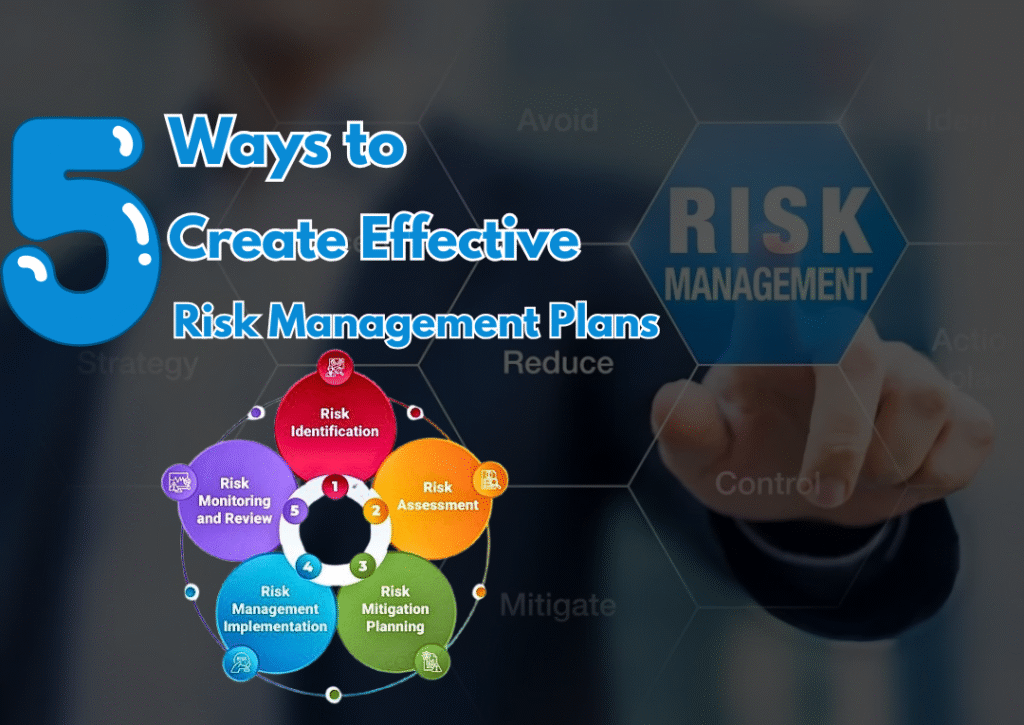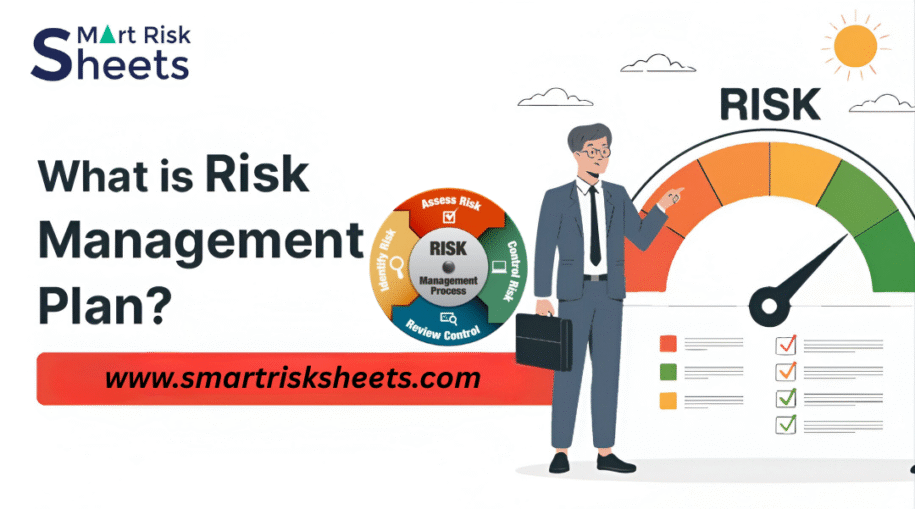Risk management simply refers to the process of identifying, assessing, and combating possible risks that could affect a project, business, organization, or even individual.
The truth is that every successful business is a product of effective risk management. Whether you know it or not, every business faces risks. Only those with effective risk management excel.
Want to excel but don’t know how to go about this?
No worries, at SmartRiskSheet, we have brought you ways to create effective risk management plans.
Top 5 Ways to Create Effective Risk Management Plans

A Risk Management Plan is a progressive document created to help people prepare for and handle risks in business. It typically requires continuous monitoring (as well as back and forth communication) in order to ensure that it remains relevant and effective.
Below are some of the steps to create an effective risk management plan:
Step 1: Define Your Goal
For you to have a proper risk management plan, you have to clearly understand and state your goal. If you work for an organisation, you need to understand its aims, objectives, scope, mission and overall risk appetite.
Asking certain questions like “what exactly are you trying to achieve?” “what’s at stake?”, “who is involved?” “How much risk are you/your organization willing to accept?” will help you understand the scope and define the boundaries (if any) of the risk management efforts. Having a clear scope can enable you to focus your efforts to ensure that all potential risks are relevant to your goals
Step 2: Collaborative Risk Management
Let there be a seamless collaboration between all relevant stakeholders to pinpoint all potential risks. You don’t have to focus on the threats (negative impacts) alone. Think farther into the future and look for possible opportunities (positive impacts).
To identify risk, you can brainstorm and receive input from team members. Also you can apply SWOT analysis to determine the Strengths, Weaknesses, Opportunities, and Threats of your business/company. Similarly, you can learn from past project reports and incident records, consult with subject matter experts to gain specialized insights.
Step 3: Risk Prioritisation
After successfully identifying all possible risks, the next step is to list them in order of likelihood and potential impact. You can use qualitative analysis (e.g., “high,” “medium,” “low”) to assess probability and impact. You can also use quantitative analysis (using numerical values to calculate the potential or financial impact of risks. Right prioritisation helps you to focus on the most critical risks before less critical ones.
Step 4: Risk Response Strategies
The fourth step is to assign specific actions to address each prioritized risk. For negative risks you can use terms like “Accept”, “Avoid”, “Mitigate” or “Transfer”.
“Accept” means that you acknowledge the risk but won’t take any action unless it occurs. For such as this, there is always a contingency reserve. “Avoid” means that you may have to change the project scope (if necessary) to eliminate the risk entirely. Simply avoid the risk at all costs! “Mitigate” means that you are putting plans in place to reduce the probability or impact of the risk. While “Transfer” means that you shift the responsibility to a third party to handle.
For positive risks which could also turn out to become opportunities you can use certain terms like: “Accept” meaning you acknowledge the opportunity but chasing it. “Exploit” meaning you take action to ensure it happens. “Enhance” meaning that you create plans that will increase the probability or positive impact of the opportunity. You can also allocate ownership of the opportunity to a third party who can best take advantage of it.
Step 5: Plan Implementation
On this step, you need to clearly communicate roles, the risk management plan and response strategies to all risk owners and relevant stakeholders. Furthermore, you can integrate the risk management plan and actions into the project’s operational processes.
Step 6: Monitor and Control Risks
Finally, you have to keep the risk management process going as it is not a one-time activity. You can track risks using a risk register, continuously look for new risks, watch out for “risk triggers”, conduct periodical audits and update your plan as needed.
Risk Management Table
| Risk ID | Description | Category | Impact | Probability | Action | Owner | Status |
| 1 | Data Breach | Security | High | Medium | Implement encryption | John Doe | Active |
| 2 | Budget Overrun | Financial | High | High | Secure additional funding | Jane Smith | Mitigated |
| 3 | Resource Shortage | Operational | Medium | High | Cross-train staff | Emily Johnson | Active |
| 4 | Compliance Issue | Compliance | High | Low | Review regulations regularly | Mark Lee | Resolved |
| 5 | Technology Failure | Technical | High | Medium | Upgrade software systems | Sarah Connor | Active |
| 6 | Supply Chain Disruption | Operational | Medium | Medium | Diversify suppliers | Alex Kim | Active |
| 7 | Market Competition | Strategic | Low | High | Conduct market analysis | Rachel Green | Active |
| 8 | Staff Turnover | HR | Medium | Medium | Improve employee engagement | Tom Brown | Active |
| 9 | Legal Challenges | Compliance | High | Low | Consult legal team | Linda White | Mitigated |
| 10 | Project Delay | Project Management | High | Medium | Adjust project timeline | Alex Turner | Active |
Conclusion
In conclusion, when you prioritise effective risk management, it becomes easier to identify, assess, and control potential risks. This in turn helps you to minimize their negative impact on your business and maximize opportunities for your advantage.


Leave a Reply